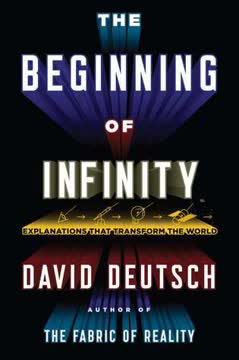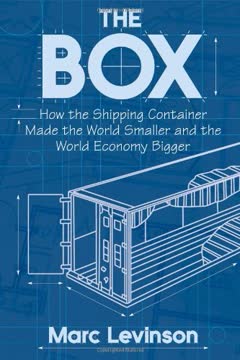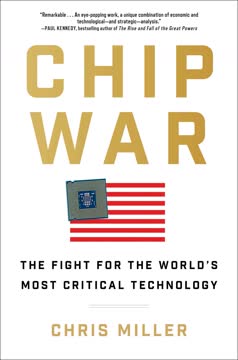Key Takeaways
1. Singapore's journey from a struggling nation to a thriving city-state
"If we were a soft society then we would already have perished. A soft people will vote for those who promised a soft way out, when in truth there is none."
Economic transformation: Singapore's transformation from a poor, resource-scarce island to a thriving global hub is a testament to its people's resilience and adaptability. The nation faced numerous challenges, including:
- High unemployment rates
- Lack of natural resources
- Racial tensions
- Regional instability
Despite these obstacles, Singapore managed to:
- Develop a robust economy
- Build world-class infrastructure
- Establish itself as a financial and technological center
- Achieve one of the highest per capita GDPs in the world
This remarkable journey was driven by a combination of visionary leadership, pragmatic policies, and the collective effort of its citizens.
2. Lee Kuan Yew's pragmatic approach to governance and nation-building
"I concluded an island city-state in Southeast Asia could not be ordinary if it was to survive."
Pragmatism over ideology: Lee Kuan Yew's leadership was characterized by a relentless focus on practical solutions rather than ideological dogma. This approach allowed Singapore to:
- Adapt quickly to changing global circumstances
- Implement policies based on their effectiveness rather than popularity
- Make difficult decisions for long-term benefit
Key aspects of Lee's pragmatic governance include:
- Emphasis on economic growth and job creation
- Promotion of meritocracy and anti-corruption measures
- Strategic urban planning and infrastructure development
- Investment in education and human capital
This pragmatic approach enabled Singapore to navigate complex challenges and emerge as a model of efficient governance and rapid development.
3. The importance of economic development and attracting foreign investment
"We decided to concentrate on getting factories started. Despite our small domestic market of two million, we protected locally assembled cars, refrigerators, air-conditioners, radios, television sets and tape-recorders, in the hope that they would later be partly manufactured locally."
Economic strategy: Singapore's economic success was built on a deliberate strategy to attract foreign investment and develop export-oriented industries. Key elements of this strategy included:
- Creating a business-friendly environment with low taxes and efficient regulations
- Investing in infrastructure and human capital
- Establishing industrial estates and free trade zones
- Promoting Singapore as a regional hub for various industries
The government also focused on:
- Developing the financial sector
- Encouraging high-tech and knowledge-based industries
- Fostering innovation and entrepreneurship
This approach allowed Singapore to overcome its lack of natural resources and small domestic market, transforming it into a major player in the global economy.
4. Building a multiracial society with meritocracy at its core
"We chose to redistribute wealth by asset-enhancement, not by subsidies for consumption."
Social harmony: Singapore's success in building a harmonious multiracial society is rooted in its commitment to meritocracy and equal opportunities. Key policies and initiatives include:
- Ensuring fair representation of all racial groups in government and public institutions
- Implementing a bilingual education policy
- Promoting racial integration in public housing
- Establishing common spaces for interaction among different communities
The emphasis on meritocracy meant that:
- Individuals were rewarded based on their abilities and contributions
- There was a focus on education and skills development
- Social mobility was encouraged and facilitated
This approach helped to create a sense of national identity that transcended racial and religious differences, contributing to Singapore's stability and cohesion.
5. Singapore's strategic approach to foreign relations and regional diplomacy
"We had to work against seemingly insuperable odds to make it from poverty to prosperity in three decades."
Diplomatic strategy: Singapore's foreign policy was shaped by its vulnerable geopolitical position and the need to ensure its survival and prosperity. Key elements of this strategy included:
- Maintaining good relations with major powers while preserving independence
- Actively participating in regional and international organizations
- Promoting regional stability and economic cooperation
- Developing a strong defense capability as a deterrent
Singapore's approach to regional diplomacy involved:
- Balancing relations with neighbors like Malaysia and Indonesia
- Contributing to ASEAN's development and effectiveness
- Positioning itself as a neutral and reliable partner in regional affairs
This strategic approach allowed Singapore to punch above its weight in international affairs and secure its interests in a complex geopolitical environment.
6. The role of education and talent development in Singapore's success
"I settled on a two-pronged strategy to overcome our disadvantages. The first was to leapfrog the region, as the Israelis had done."
Human capital: Recognizing that people were its most valuable resource, Singapore placed a strong emphasis on education and talent development. Key initiatives included:
- Investing heavily in the education system at all levels
- Promoting bilingualism and technical education
- Offering scholarships and attracting foreign talent
- Developing a skilled workforce aligned with economic needs
The focus on human capital development led to:
- A highly educated and skilled workforce
- Increased innovation and productivity
- Singapore's emergence as a knowledge-based economy
This investment in people has been crucial in Singapore's ability to adapt to changing economic conditions and maintain its competitive edge.
7. Overcoming resource limitations through innovation and strategic planning
"To work a social security system like the CPF, an economy needs to have low inflation and interest rates above inflation rates."
Resource management: Singapore's success in overcoming its lack of natural resources is a testament to its innovative approach and strategic planning. Key strategies included:
- Developing efficient water management systems
- Investing in sustainable energy solutions
- Creating green spaces and promoting environmental sustainability
- Optimizing land use through urban planning
Specific initiatives encompassed:
- The development of NEWater (recycled water)
- Creation of reservoirs and catchment areas
- Implementation of congestion pricing for traffic management
- Development of underground spaces for various uses
These efforts allowed Singapore to turn its limitations into strengths, creating a livable and sustainable urban environment despite its small size and lack of natural resources.
8. Maintaining political stability and combating corruption
"We made sure from the day we took office in June 1959 that every dollar in revenue would be properly accounted for and would reach the beneficiaries at the grass roots as one dollar, without being siphoned off along the way."
Good governance: Singapore's success is underpinned by its commitment to political stability and clean government. Key aspects of this approach include:
- Zero tolerance for corruption at all levels of government
- Competitive salaries for public servants to reduce temptation
- Strong, independent anti-corruption agencies
- Transparent and efficient public administration
The government also focused on:
- Maintaining social order and security
- Fostering a culture of integrity in public service
- Regular review and updating of anti-corruption measures
This emphasis on good governance has been crucial in building trust between the government and citizens, as well as attracting foreign investment and talent.
9. Singapore's transition from British colonial rule to independence
"We had to have a credible force to protect ourselves. I had no fear of the Tunku changing his mind but other powerful Malay leaders, like Syed Ja'afar Albar who so strongly opposed separation that he had resigned as secretary-general of UMNO, might persuade Brigadier Alsagoff it was his patriotic duty to reverse separation."
Nation-building: Singapore's journey from a British colony to an independent nation was marked by significant challenges and transformations. Key milestones included:
- Self-governance in 1959
- Merger with Malaysia in 1963
- Unexpected separation and independence in 1965
The transition period involved:
- Building national institutions from scratch
- Developing a national identity
- Establishing a viable economy and defense capability
- Navigating complex regional relationships
This period of rapid change and uncertainty shaped Singapore's approach to governance and international relations, instilling a sense of vulnerability that drove its subsequent development strategies.
Last updated:
FAQ
What's From Third World to First: The Singapore Story: 1965-2000 about?
- Transformation of Singapore: The book chronicles Singapore's journey from a struggling, resource-poor nation to a thriving metropolis under Lee Kuan Yew's leadership.
- Lee Kuan Yew's Leadership: It provides insights into Lee's vision and policies that shaped Singapore, reflecting on his pivotal decisions and experiences.
- Historical Context: Set against regional tensions, it highlights the socio-political landscape of Southeast Asia during the Cold War and its impact on Singapore's development.
Why should I read From Third World to First?
- Invaluable Insights: Offers a firsthand account of nation-building trials and triumphs from a leader crucial to Singapore's history.
- Lessons for Developing Nations: Serves as a case study for developing countries, providing valuable strategies for leaders and policymakers.
- Personal Reflections: Lee shares personal anecdotes that humanize the political narrative, making it a personal journey of growth and determination.
What are the key takeaways of From Third World to First?
- Importance of Governance: Effective governance and clean administration are essential for national development and prosperity.
- Role of Education: Education is critical in transforming society and improving living standards, emphasizing talent and skill development.
- Unity in Diversity: The need for a multiracial society where all citizens are treated equally is a recurring theme throughout the memoir.
What are the best quotes from From Third World to First and what do they mean?
- "The world does not owe us a living.": Emphasizes self-reliance and the importance of hard work for individual and national success.
- "We had to make extraordinary efforts to become a tightly knit, rugged and adaptable people.": Highlights the necessity of unity and resilience in nation-building.
- "If we were a soft society then we would already have perished.": Stresses the importance of toughness and determination in governance.
How did Lee Kuan Yew build Singapore's army from scratch?
- Immediate Security Needs: Recognizing the urgent need for defense, Lee appointed Goh Keng Swee to build the army post-independence.
- International Collaboration: Sought assistance from Israel for military training, crucial in establishing a credible defense force quickly.
- National Service Implementation: Introduced national service to build a large, capable military, emphasizing the potential of a motivated population.
What strategies did Lee Kuan Yew use to attract foreign investments?
- Business-Friendly Environment: Focused on a stable regulatory framework, including tax incentives and reducing bureaucratic hurdles.
- Infrastructure Development: Invested significantly in infrastructure, like the Jurong industrial estate, to attract foreign companies.
- Promoting a Skilled Workforce: Emphasized education and training to ensure a skilled labor force, crucial for economic success.
How did Lee Kuan Yew manage race relations in Singapore?
- Multiracial Policies: Implemented policies promoting racial harmony and equality, creating a "fair, not welfare, society."
- Language as a Unifying Factor: Promoted English as a common working language to bridge communication gaps and foster integration.
- Community Engagement: Established grassroots organizations to facilitate dialogue and cooperation among different communities.
What challenges did Singapore face during its economic transformation?
- Loss of British Military Spending: The withdrawal of British forces in 1971 led to a significant economic downturn, losing 20% of GDP.
- Unemployment and Social Stability: High unemployment threatened social stability, prompting a focus on job creation through industrialization.
- Global Economic Shifts: The oil crisis of 1973 tested Singapore's resilience, emphasizing adaptability to survive global changes.
How did Lee Kuan Yew ensure a clean government in Singapore?
- Corruption Prevention Measures: Established the Corrupt Practices Investigation Bureau (CPIB) to combat corruption effectively.
- Strict Legal Framework: Implemented stringent laws to deter corrupt practices, treating unexplained wealth as evidence.
- Public Accountability: Maintained transparency and accountability in governance, viewing corruption as a societal threat.
What role did education play in Singapore's development according to From Third World to First?
- Foundation for Economic Growth: Education was a critical driver of economic development, emphasizing talent and skill development.
- Bilingualism and Multiculturalism: Promoted bilingual education to create a skilled workforce and prevent racial conflicts.
- Lifelong Learning: Advocated for continuous education and skills development to adapt to changing economic conditions.
How did Lee Kuan Yew address the issue of social welfare in Singapore?
- Self-Reliance Philosophy: Focused on creating a "fair, not welfare, society," avoiding over-redistribution through high taxation.
- CPF System: Established the Central Provident Fund (CPF) to encourage savings for retirement and healthcare.
- Targeted Assistance: Provided targeted assistance for those in need, ensuring no one is deprived of essential medical care.
How does From Third World to First reflect Lee Kuan Yew's personal philosophy?
- Pragmatism Over Ideology: Focused on practical solutions rather than ideological dogmas, adapting policies to Singapore's context.
- Emphasis on Results: Prioritized effectiveness and efficiency in governance, measuring success by tangible outcomes.
- Long-Term Perspective: Advocated for a long-term perspective in policymaking, planning for future challenges and opportunities.
Review Summary
From Third World to First is praised as an insightful memoir detailing Lee Kuan Yew's leadership in transforming Singapore. Readers appreciate his pragmatic approach, strategic vision, and detailed accounts of domestic and foreign policy. The book offers valuable lessons for developing nations and provides a unique perspective on Asian geopolitics. While some criticize Lee's authoritarian style and ego, most reviewers consider it an essential read for understanding Singapore's remarkable rise and Lee's influential role in shaping the nation's success.
Similar Books








Download PDF
Download EPUB
.epub digital book format is ideal for reading ebooks on phones, tablets, and e-readers.





